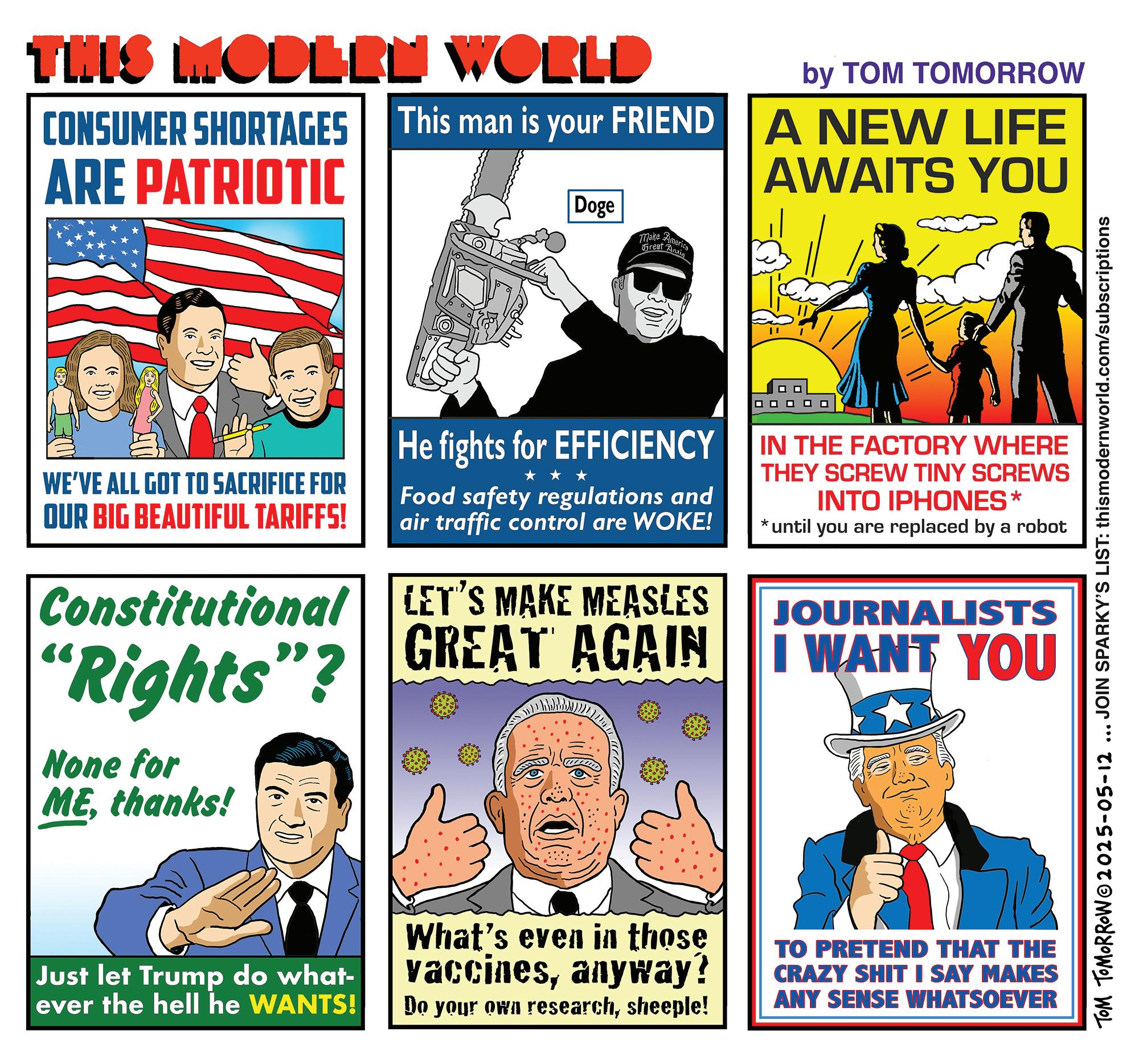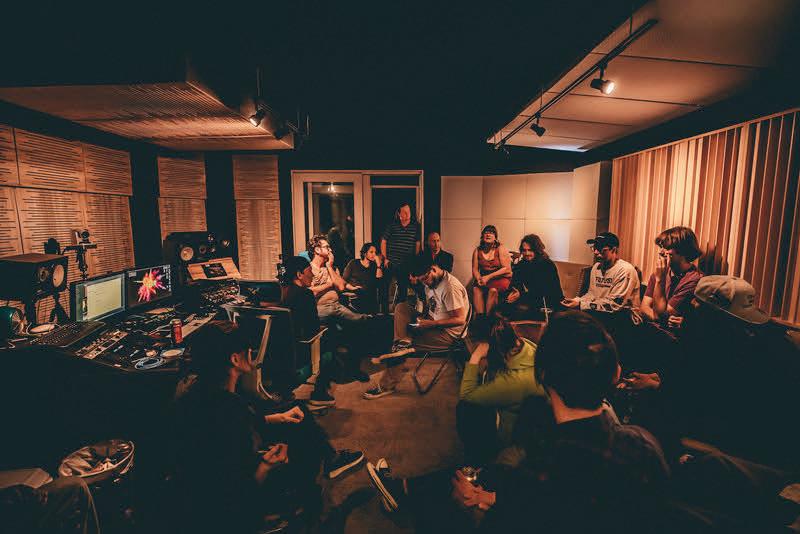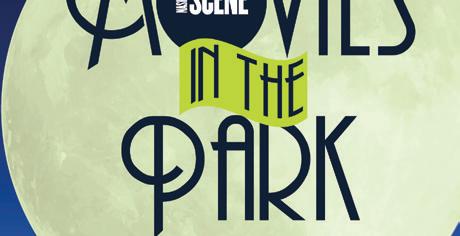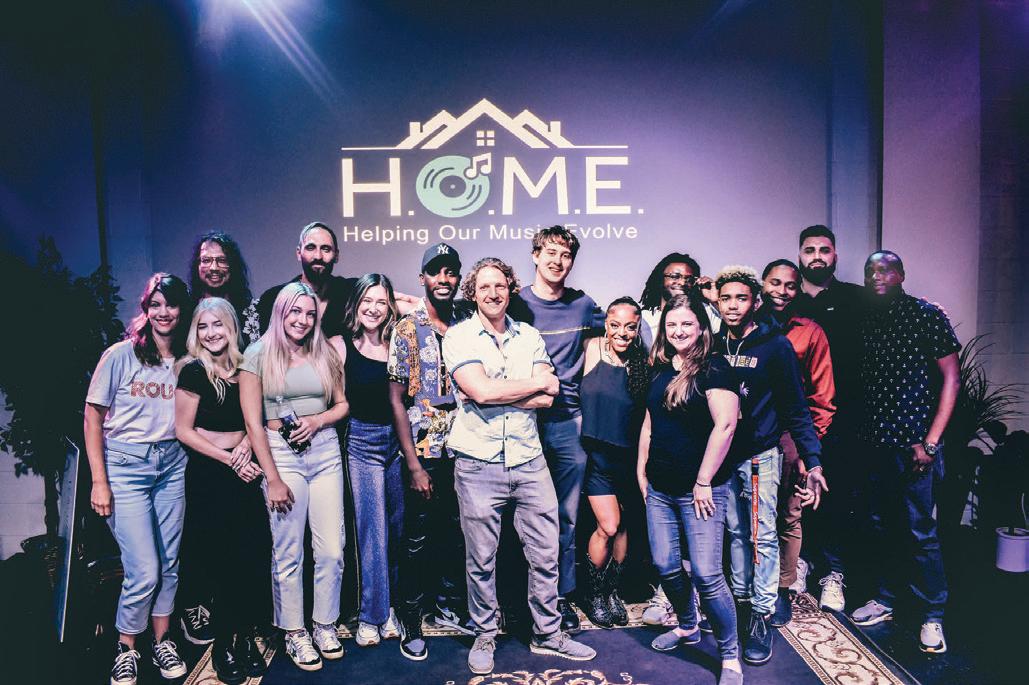




FEAR GRIPS CITY AMID TRAFFIC TRAPS BY STATE TROOPERS, ICE
>> PAGE 7




FOOD & DRINK: THE ELUSIVE MAGIC OF CAFE COCO, GONE BUT NOT FORGOTTEN
>> PAGE 24




























FEAR GRIPS CITY AMID TRAFFIC TRAPS BY STATE TROOPERS, ICE
>> PAGE 7




FOOD & DRINK: THE ELUSIVE MAGIC OF CAFE COCO, GONE BUT NOT FORGOTTEN
>> PAGE 24
























As Nashville’s nonprofit film center reaches its 100th birthday, we look at the theater’s past, present and future BY LOGAN BUTTS AND D. PATRICK RODGERS



















Fear Grips City After Traffic Traps by State Troopers, ICE
Immigration roundups terrorize South Nashville and take residents with no criminal history BY
ELI MOTYCKA
State of the Air: Air Quality in Nashville Continues to Worsen Communities of color are hit harder by air pollution BY JULIANNE
AKERS
Street View: Where Transit Meets Affordable Housing
Some city planners envision a Nashville where transit intersects with ‘ample job opportunities, services, parks and community infrastructure’ BY LENA MAZEL
COVER PACKAGE: THE BELCOURT AT 100
Back
Talking to Belcourt historian and archivist Teddy Minton about celebrating the Nashville institution’s rich history BY
D. PATRICK RODGERS
Forward
The Belcourt provides a successful blueprint for independent theaters moving forward BY LOGAN BUTTS
CRITICS’ PICKS
Brave New Works Lab, AC/DC, Ken Pomeroy, Carly Pearce, Batman Forever and more
The Elusive Magic of Cafe Coco
Remembering the Rock Block’s all-night place of belonging, gone but not forgotten BY CAMERON

From the Outskirts
An unexpected friendship lies at the heart of Ocean Vuong’s The Emperor of Gladness BY EMILY CHOATE; CHAPTER16.ORG
The Sensual World Photographer Arielle Gray is creating intimate, innovative photography in Nashville BY LAURA HUTSON HUNTER
Not in a Shy Way Yola reawakens herself with My Way BY BRITTNEY M c KENNA
A Gathering of GOATs
Gladys Knight, Patti LaBelle, Chaka Khan and Stephanie Mills unite for The Queens Tour BY SEAN L. MALONEY

I Think You Should Stay Tim Robinson commits riotous self-destruction in Friendship BY ELI MOTYCKA
NEW YORK TIMES CROSSWORD AND THIS MODERN WORLD MARKETPLACE ON THE COVER:
The Belcourt Theatre; photo by Angelina Castillo
SUBSCRIBE NEWSLETTER: nashvillescene.com/site/forms/subscription_services PRINT: nashvillesceneshop.com
CONTACT
TO ADVERTISE: msmith@nashvillescene.com EDITOR: prodgers@nashvillescene.com


In my 35+ years living and working in Nashville, I’ve navigated the twists, turns and now expansive growth of this wonderful place. Let me help you make the best choices in your biggest investment — real estate. I’m so grateful for my clients’ great reviews, repeat business and continued referrals. I’d love the opportunity to help make your Real Estate Goals a reality! Buy



EDITOR-IN-CHIEF D. Patrick Rodgers
MANAGING EDITOR Alejandro Ramirez
SENIOR EDITOR Dana Kopp Franklin
ARTS EDITOR Laura Hutson Hunter
MUSIC AND LISTINGS EDITOR Stephen Trageser
ASSOCIATE EDITOR Logan Butts
CONTRIBUTING EDITOR Jack Silverman
STAFF WRITERS Julianne Akers, John Glennon, Hannah Herner, Hamilton Matthew Masters, Eli Motycka, Nicolle Praino, William Williams
SENIOR FILM CRITIC Jason Shawhan
EDITORIAL INTERN Bailey Brantingham
CONTRIBUTING WRITERS Cat Acree, Sadaf Ahsan, Ken Arnold, Ben Arthur, Radley Balko, Bailey Brantingham, Ashley Brantley, Maria Browning, Steve Cavendish, Chris Chamberlain, Rachel Cholst, Lance Conzett, Hannah Cron, Connor Daryani, Tina Dominguez, Stephen Elliott, Steve Erickson, Jayme Foltz, Adam Gold, Kashif Andrew Graham, Seth Graves, Kim Green, Amanda Haggard, Steven Hale, Edd Hurt, Jennifer Justus, P.J. Kinzer, Janet Kurtz, J.R. Lind, Craig D. Lindsey, Margaret Littman, Sean L. Maloney, Brittney McKenna, Addie Moore, Marissa R. Moss, Noel Murray, Joe Nolan, Katherine Oung, Betsy Phillips, John Pitcher, Margaret Renkl, Daryl Sanders, Nadine Smith, Ashley Spurgeon Shamban, Amy Stumpfl, Kay West, Nicole Williams, Ron Wynn, Kelsey Young, Charlie Zaillian
ART DIRECTOR Elizabeth Jones
PHOTOGRAPHERS Angelina Castillo, Eric England, Matt Masters
GRAPHIC DESIGNERS Sandi Harrison, Tracey Starck, Mary Louise Meadors
GRAPHIC DESIGN INTERN Anna Creviston
PRODUCTION COORDINATOR Christie Passarello
MARKETING AND EVENTS DIRECTOR Robin Fomusa
BRAND PARTNERSHIPS AND EVENTS MANAGER Alissa Wetzel
PUBLISHER Mike Smith
ASSOCIATE PUBLISHER Michael Jezewski
SENIOR ADVERTISING SOLUTIONS CONSULTANTS
Teresa Birdsong, Olivia Britton, Carla Mathis, Heather Cantrell Mullins, Niki Tyree
ADVERTISING SOLUTIONS CONSULTANTS
Kailey Idziak, Rena Ivanov, Allie Muirhead, Andrea Vasquez
SALES OPERATIONS MANAGER Chelon Hill Hasty
ADVERTISING SOLUTIONS ASSOCIATES Audry Houle, Jack Stejskal
SPECIAL PROJECTS COORDINATOR Susan Torregrossa
PRESIDENT Mike Smith
CHIEF FINANCIAL OFFICER Todd Patton
CORPORATE CREATIVE DIRECTOR Elizabeth Jones
IT DIRECTOR John Schaeffer
CIRCULATION AND DISTRIBUTION DIRECTOR Gary Minnis FW PUBLISHING LLC
the above address. In memory of Jim Ridley, editor 2009-2016








Immigration roundups terrorize South Nashville and take residents with no criminal history
BY ELI MOTYCKA
STATE TROOPERS PULLED out of the Tennessee Highway Patrol’s Ezell Pike headquarters around 9:45 p.m. on Friday, May 10. Unmarked cars tailed each black-and-tan SUV, heading west toward South Nashville’s busy state roads.
While state troopers watched Nashville drivers on Antioch Pike and Harding Place, a volunteer team watched law enforcement from private vehicles. The loosely coordinated MigraWatch network has peer groups across the country. The effort, meant to witness and document activity by Immigration and Customs Enforcement in local communities, turns concerned citizens into a patrol of their own.
“Doing this, in a weird way, helps restore my hope in humanity,” says a MigraWatch volunteer who asks to be referred to by just the initial A, working their third three-hour shift of the week. “Cops are only there because they’re paid to do the work, and we know that cops are struggling to recruit right now. But there are so many people who are showing up to look out for their friends and neighbors. I can’t control the course of the world, but that doesn’t mean I have to go quietly or sit by and do absolutely nothing.”
Dozens of people were suddenly detained in Nashville by state troopers and ICE in the early hours of Sunday, May 4, setting off a chaotic week that included community vigils, press conferences and a contentious special-called city council committee meeting. The city had advance warning of the mass operation, according to a phone call from a federal agent shared last week. Amid harsh criticism for any cooperation between the city and immigration enforcement, Mayor Freddie O’Connell amended a previous executive order hoping to better track and report immigration-related activity.
May 10, Metro legal director Wally Dietz joined O’Connell for a weekly press briefing. “The short answer is, yes, we are powerless,” Dietz told reporters. “We have absolutely no authority to instruct ICE not to carry out their enforcement actions. We have no authority to tell THP they cannot cooperate with ICE.”
MigraWatch did not verify any ICE traffic stops on Saturday or Sunday nights. Both days, agents were seen on Lower Broadway, where immigrants form the backbone of busy kitchens and bars serving tourists. According to one Lower Broad employee, some establishments closed early or limited service over the weekend due to ICE agents, including Margaritaville and Honky Tonk Central.
Statements from Metro Nashville Public Schools director Adrienne Battle and Metro Nashville Police Department Chief John Drake

COMMUNITY MEMBERS PROTEST ICE STOPS AT A SPECIAL-CALLED MEETING OF THE METRO COUNCIL’S PUBLIC HEALTH AND SAFETY COMMITTEE, MAY 7
have attempted to reassure residents about their safety, despite the plain uptick in immigrationrelated arrests and detentions. Afraid to drive on major state roads, some residents have chosen to stay home from work or defer daily errands.
Joining MigraWatch has given A a productive way to channel their energy since the January inauguration of Donald Trump.
“I have no problem being confrontational with bullies, and these people want to separate and divide us,” A continues. “They might be starting with my immigrant friends and neighbors, but they aren’t stopping there. I’m not gonna go down without resisting every inch of the way.”
Each night is different. A doesn’t know — or doesn’t say — how many MigraWatch volunteers are out on this Friday night or where they’re stationed. “Verifiers,” A explains, are connected by an encrypted group message that shares by-the-minute locations of traffic stops and videos and photos taken during THP and ICE interactions.
Around 10 p.m., we see flashing lights next to the Exxon at the corner of Harding Place and Metroplex Drive, near an I-24 exit. One state trooper walks between his official vehicle and the car he’s just pulled over. Three unmarked cars — a white Chevrolet Impala, a burgundy Dodge Charger and gray Jeep Grand Cherokee — trail behind him like a “hunting pack,” says A. These are the assumed federal agents. They stare straight ahead. Behind rolled-up tinted windows, they wear mismatched versions of the same informal uniform: tan or blue pants, boots, body armor, baseball cap. Another verifier team has already witnessed the stop, which they say involved a white driver, lasted less than
five minutes and resulted in no citation. The Tennessee Highway Patrol did not respond to multiple requests for comment from the Scene
The caravan pulls out and detains a new driver in a silver minivan minutes later, pulling into a McDonald’s parking lot across Harding. Quickly, A follows, arriving in time to see the stop from the beginning. Another verifier is already there and speaks loudly to the confusedlooking driver, a young Hispanic man, advising him of his constitutional rights in Spanish, while the state trooper runs his identification. The officer stopped the car for a dead brake light, the driver says; a volunteer walks behind the minivan to confirm that all lights work fine. The same three unmarked vehicles wait in nearby parking spots. No officers respond to questions from the Scene. Then, without explanation, the officer let the man go.
“That was the best-case scenario,” A says.
The Scene witnessed two more stops by THP, both involving white drivers that lasted just a few minutes and resulted in no citations. In one case, an MNPD patrol car did help a state trooper pull over a driver but did not participate in the traffic stop. Outside the Sam’s Club on Antioch Pike, one white driver said he was pulled over by troopers for going 48 in a 45.
Catch-and-release behavior from THP picked up dramatically the previous weekend and continued for several nights. Areas targeted are predominantly Hispanic, and observers tell the Scene that the stops rarely seem to stem from credible traffic violations or produce citations, leading observers to confidently describe the actions as racial profiling by law enforcement. Federal agents can’t make traffic stops, so instead work in tandem with THP, which by
state code has the authority to communicate immigration status to the Department of Homeland Security.
PHOTO: MARTIN CHERRY / NASHVILLE BANNER
Tedious and time-consuming, the dragnet strategy enables state troopers to stop a driver in the presence of ICE agents. To make a legal arrest, federal immigration officers must have “probable cause” that an individual has broken immigration law or federal law, though legal guardrails around ICE arrests are still very much in flux. Agents and troopers have stopped, detained, arrested or initiated deportation proceedings for hundreds of people in Nashville; of those, just three have been tied to violent crime, according to the Nashville Banner
“None of these people who were detained had a criminal record,” Isa, a volunteer who has worked with MigraWatch, recently told a crowd in the Antioch High School parking lot. The group was gathered last week for a vigil for those detained by ICE. “They were protected. They had their license. And now they’re being looked at as criminals. They were coming off from work, they were coming back from hanging out with family. They were going back to their, to their wife, to their kids. They look at my people as criminals, and they look at me as a criminal too.” ▼
Communities of color are hit harder by air pollution
BY JULIANNE AKERS
WHEN LOOKING AT THE Nashville skyline on a hot summer day, you’ll often notice it’s clouded in that gray haze known as smog — an environmental phenomenon becoming more prevalent due to worsening air quality, in part caused by increased vehicle emissions.
Davidson County received a failing grade from the American Lung Association’s recent ”State of the Air” report, noting unhealthy levels of ozone and particle pollution.
Amanda Garcia, a senior attorney at the Southern Environmental Law Center, says rapid growth — and the subsequent increase in car traffic — is one of the biggest factors affecting air quality in Nashville.
“We’ve seen a really dramatic increase in the amount of traffic in the Nashville area over the past 10 years or so,” Garcia says. “And with all of that ad-
ditional traffic comes air quality problems, more pollution from more cars on the road.”
Poor air quality can pose significant health risks to people with respiratory diseases like asthma and chronic obstructive pulmonary disease, but the American Lung Association says anyone living in areas with unhealthy levels of air pollution can be affected.
“Air pollution kills people,” Garcia says. “Air pollution shortens people’s lives. And with smog pollution, we actually see the biggest impact on young kids, so kids between the ages of 0 and 4. That should be a big concern for everybody in the community, and in particular, parents of young children, because that type of pollution hits young kids the hardest.”
People of color in Davidson County are disproportionately affected by air pollution. Predominantly Black neighborhoods in North Nashville — much of which borders Interstate 40 — are exposed to more car traffic, and as a result, subject to worse air quality.
“Not only did [I-40] break up the community by putting a big highway in the middle of it, but it has also meant that the predominantly Black community in North Nashville is exposed to higher levels of air pollution from the cars on the highway,” Garcia says. She notes that other interstates like I-65 run through South Nashville, which is home to a large Hispanic population.
Programs like Mayor Freddie O’Connell’s “Choose How You Move” transit initiative could improve air quality at the local level and help limit the effects of climate change as a whole by reducing greenhouse gas emissions from cars.
“Using the local bus system, biking, walking — any type of transportation that reduces the overall number of cars on the road — is going to also help reduce air pollution,” Garcia says. “We can also switch to or incentivize our local community to shift to electric vehicles.”
Additional factors that contribute to air pollution include coal plants located on the outskirts of Davidson County, which have been found to cause hundreds of premature deaths every year, according to a study from the Sierra Club.
Environmentalists have long encouraged the Tennessee Valley Authority to shift away from coal-powered energy and gas plants and explore clean energy alternatives like solar and wind. ▼

Some city planners envision a Nashville where transit intersects with ‘ample job opportunities, services, parks and community infrastructure’
BY LENA MAZEL
Street View is a monthly column taking a close look at development-related issues affecting different neighborhoods throughout the city.
IN MANY WAYS, Urban Housing Solutions’ property 26th & Clarksville looks like smart city planning. The 141-unit property offers affordable housing for seniors, disabled people, and lowand middle-income Nashvillians. And significantly, it’s next to the Ernest “Rip” Patton North Nashville Transit Center, so residents can easily get to other parts of the city.
While 26th & Clarksville works well for its residents, it’s far too unusual in a city that’s missing affordable housing within easy distance of transit. But it could provide a key for how to build Nashville’s future.
Mayor Freddie O’Connell’s “Choose How You Move” transit initiative — successfully passed by referendum in November — has identified 10 “all-access corridors,” heavily used streets with significant planned upgrades including more frequent transit service, more sidewalks and improved signals. At the same time, the mayor’s office has identified affordable housing as a crucial city need. O’Connell discussed housing needs in this month’s annual State of Metro address and echoed these concerns in a recent interview with the Scene, in which he mentioned transport-accessible housing and advocated for responsible, careful housing policy changes at the Metro Council district level.
Housing and transit also came together in a recent study from The Urban Institute, which suggests that building affordable housing close to O’Connell’s proposed all-access corridors would help many residents while boosting WeGo ridership — keeping the bus system running well. Currently, the study estimates that only 13 percent of Nashville housing is within a quarter-mile of these corridors.
Overall, the Metro Planning Department’s recent Unified Housing Strategy suggests that the city should anticipate the need for an additional 90,000 units over the next 10 years to meet the demand forecast by Planning’s Housing Division.
But how would the city build more units near transit?
The Urban Institute study offers one solution: zoning changes. Inflexibilities in Nashville’s zoning code are preventing accessible neighborhoods from being affordable, the researchers find. “If the neighborhoods with the best transit access are also those experiencing gentrification, people with low incomes may be unable to take advantage of the affordable, reliable and frequent means of transportation these options

allow,” the authors write. This could also lead to lack of fare revenues, the study finds: “Locating housing near transit options is a key mechanism to secure the financial stability of Nashville’s transit system.”
The Urban Institute report has three options for how more transit-oriented housing could happen: “legalize,” allowing multifamily housing on any lot zoned for commercial or business use within a quarter-mile of all-access transit corridors; “plexify,” creating zoning to allow up to four units on single- or double-family-zoned lots; and “intensify,” allowing up to 60 units per acre on any residential zone within a quarter-mile of all-access transit corridors.
Overall, the Urban Institute study found that the “plexify” reform would create the most new housing, opening the potential for nearly 300,000 units. The “legalize” and “intensify” reforms could also create the potential for additional units, though these units may be less likely in areas that are zoned for commercial use.
City leaders have offered other solutions as well, including continued investment in tools like rental support and shared equity housing. In his State of Metro address, O’Connell mentioned a $16 million investment in the Barnes Housing Trust Fund. He also touched on the need for rezoning to allow more affordable housing to be built.
But while studies suggest zoning changes can facilitate both affordable housing and better access to transit, those can also come with additional infrastructure needs. And perhaps most significantly, even when zoning makes sense on paper, it’s unclear whether Nashville neighborhoods will allow it to happen.
“I think people recognize the problem [of housing shortages] and overall support public change to address the problem,” says Brent Elrod, Urban Housing Solutions’ managing director. “But when it really gets real and it’s in
someone’s neighborhood, it doesn’t seem like it plays out with the same level of popularity.
“There’s a gap between ideas and actions,” he continues.
Oftentimes, neighborhood associations can lobby to preserve “neighborhood character” and oppose new development. But that’s not the case everywhere: Some neighborhoods have worked together to plan new development that residents support, like a walkable East End neighborhood’s push to add “gentle density” through rezoned multifamily housing and revised Historic Zoning guidelines. Accessibility was important to this group too: Residents believed the neighborhood was a good candidate for rezoning because it already had walkable infrastructure in place.
Elrod, too, has seen enthusiasm for affordable housing in some communities. “We’ve seen real support for having affordable housing opportunities in Wedgewood-Houston and especially in the Chestnut Hill neighborhood,” he says.
While high-density, well-connected properties like Urban Housing Solutions’ 26th & Clarksville work well, they’re not the only answer. Just last week, the Metro Council moved forward with plans to redevelop longtime Goodlettsville shopping center RiverGate Mall, with developer Merus saying it will reserve land for a multimodal transit facility and make affordable senior housing units available.
“Our solutions for affordable housing are as varied as our demographics as a community,” says Elrod. When asked about his ideal scenario, he says he’d like to build more housing close to a transit center, somewhere “really well-connected.” And he’d want the housing to be in a community that has what people need: “ample job opportunities, services, parks and community infrastructure.”
“You know,” Elrod says. “What everybody wants and really deserves access to.” ▼



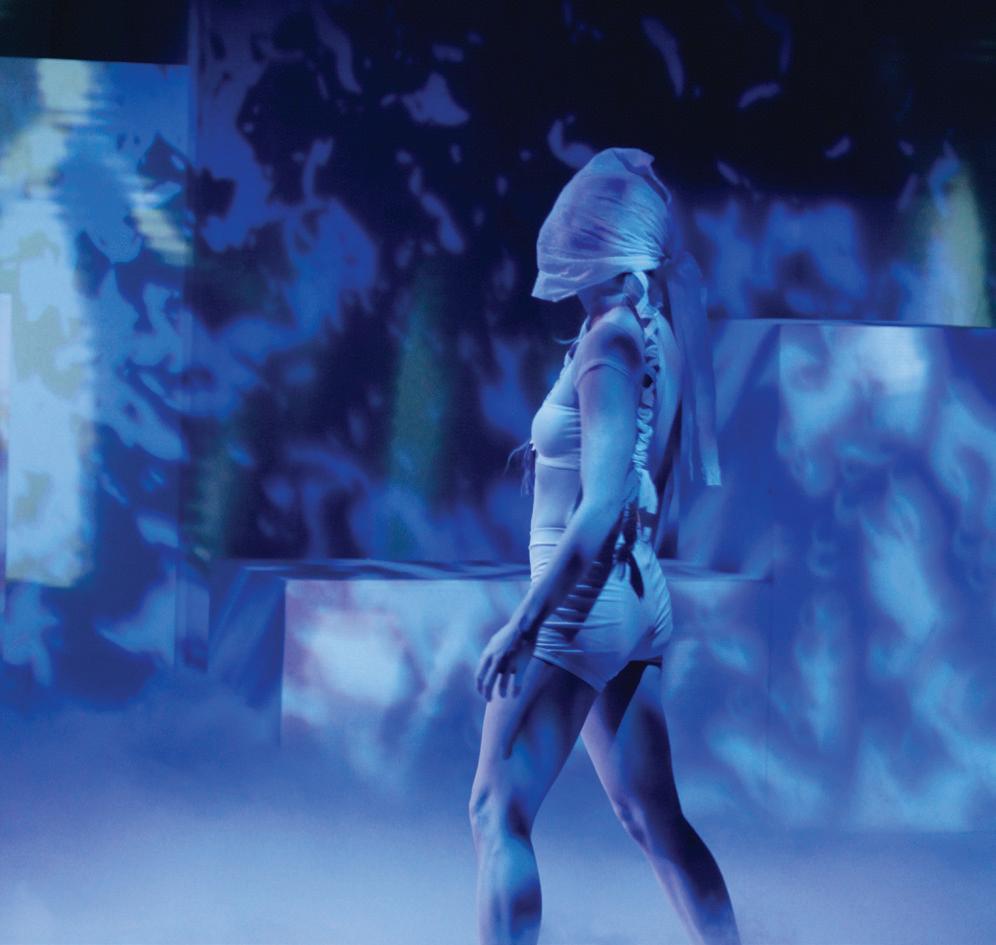

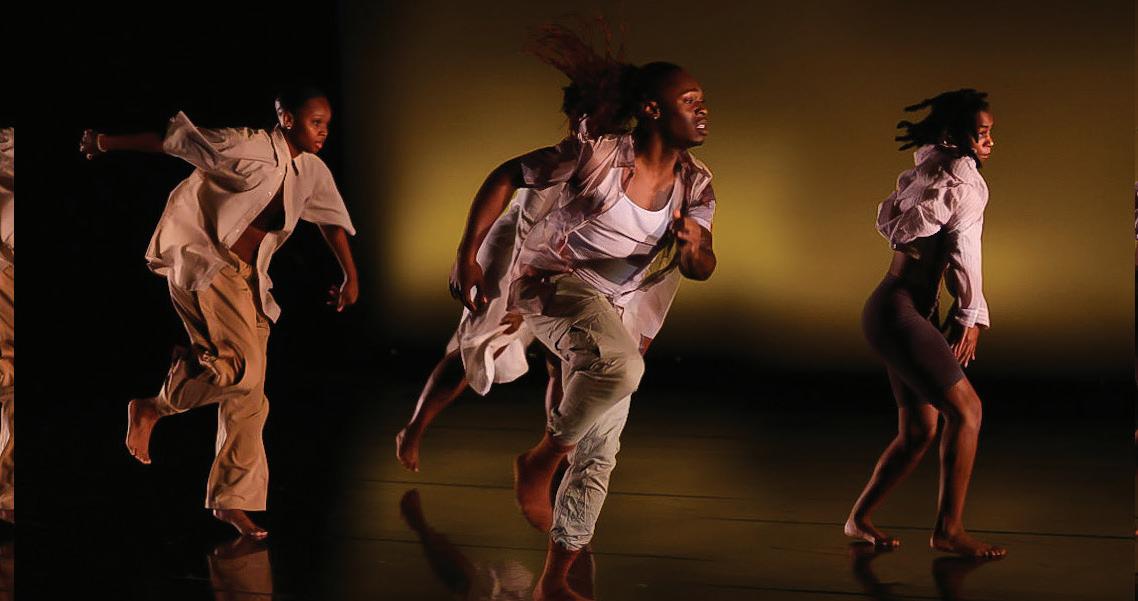

















As Nashville’s nonprofit film center reaches its 100th birthday, we look at the theater’s past, present and future

THE BUILDING AT 2102 BELCOURT AVE. has held many names over the past century. It was Hillsboro Theatre when it first opened its doors as a silent film house in 1925, and in the decades since it has been known as Belcourt Cinema and Watkins-Belcourt, among other titles.
These names reflect changes in ownership as well as changes in programming. The building has hosted not only films, plays and concerts — it was also the home of the Grand Ole Opry for a brief stretch in the mid-1930s. It has also been brought back from the brink of demise on more than one occasion. In all that time, one thing has remained steady: This building, the gem of Nashville’s Hillsboro Village, has maintained its status as a bastion for the arts in the
middle of the city.
That gem — now a thriving nonprofit cinema center, having undergone significant renovations in the past decade — is less due for a polish than it was in years past. Even so, with grants from the National Endowment for the Arts being terminated and other sources of federal funding for arts organizations drying up nationwide, institutions like the Belcourt are at risk — and in need of support and celebration.
On Sunday, the once-scrappy little theater celebrates its 100th birthday, with a slate of centennial programming planned for the coming months. In this week’s issue, we explore the past, present and future of the Belcourt.
D. PATRICK RODGERS, EDITOR-IN-CHIEF

Talking to Belcourt historian and archivist Teddy Minton about celebrating the Nashville institution’s rich history
BY D. PATRICK RODGERS
WHEN BELCOURT THEATRE historian and archivist Teddy Minton speaks about figures from the 100-year-old institution’s distant past, it’s almost as if he’s speaking to you about friends and acquaintances he knows personally.
There’s M.A. Lightman, the Nashville busi-
nessman and former champion wrestler who first opened what was then known as the Hillsboro Theatre back in 1925, and Fred Massey, the entrepreneur who purchased the building in 1966 to help its operators dig their way out of debt. There’s Lark Taylor, the thespian and founder of Nashville’s first theater guild, who graced the building’s stage in its earliest days as a playhouse, and Ellen Taylor Wallace White, the young actress who also trod the Hillsboro Theatre’s boards a century ago. When Minton talks about these people, whom he’s studied for the Belcourt Stories oral history project, he isn’t talking about ghosts from the building’s distant past — he’s talking about friends, artists, neighbors and community leaders whose histories are enmeshed with that of the Belcourt.
In 2022, knowing the nonprofit cinema center’s centennial was just over the horizon, Minton and Belcourt executive director Stephanie Silverman began discussing plans for an oral history project. Having recently received a master’s degree in public history at Middle Tennessee State University, Minton — a touring musician working front-of-house at the Belcourt — was perfectly positioned to helm the Belcourt Stories Project, which launched in early 2023.
“What was really central to it, for Stephanie in particular, was getting a comprehensive oral history with as many people related to the theater’s history as we could as a way to just capture memories and stories,” says Minton, who’s quick to credit current and former Belcourt staffers Jon Keller, Jessica Breanne, Dylan Carver and Bob Roberts with helping lay the groundwork ahead of Belcourt Stories. “But also, [we wanted to find] hard facts about the things we didn’t know, which was actually quite a bit. I mean, we knew the highlights — when we opened, when the Opry [was here].”
As it turns out, a neighborhood theater that changed hands multiple times and nearly shuttered more than once is not necessarily the sort of institution that has kept consistent records. Minton notes that — particularly after the theater’s return to screening films in the 1960s, following several decades of operation primarily as a playhouse — institutional information from some eras of the Belcourt is scant, with records and artifacts “scattered to the winds.”
“The process was trying to determine, ‘Who are the most important people that we know of?’” says Minton. “And then just issuing a broader ask to our community — we put together a trailer, which we ran [before films] — and through that, some people reached out to me. [Some people said], ‘My father was a projectionist there back in the ’60s.’ Or, ‘My grandmother used to act on your stage.’ And most of these people were our members. A couple of them were just people who come every now and then.”
In addition to interviewing patrons and community members, Minton has also conducted extensive research both online and in person using the archives of the Nashville Public Library, the Tennessee State Library & Archives, the Grand Ole Opry, the New York Public Library, the Country Music Hall of Fame and many more. (He’s also exceedingly grateful for newspapers.com.)
“Because we’ve been here for 100 years, we have the benefit of having our history as being part of lots of tendrils of Nashville’s history,” he says. “If you zoom way out on all the oral histories, it’s really about not just everyday Nashvillians and their collective, interpersonal histories, but really about Nashville’s relationship to cinema culture and film culture over 100 years, and in some cases, reaching all the way back to the beginning of cinema in the late 1800s. It’s a privilege to be in a place where there are people coming in today whose ancestors were part of the very first guild of actors on our stage 100 years ago.”
When asked if there are any special artifacts he’s come across during his research, Minton has just the story. He happened across evidence of a newsreel filmed in 1929 featuring the aforementioned Lightman — the native Nashvillian and natural showman who opened the Belcourt as the Hillsboro Theatre in 1925 — speaking to Tennessee Gov. Henry Horton about the advent of sound in film. Minton contacted an archivist in South Carolina, who digitized the newsreel and sent it along. “Now we have this,” says Minton, “the only known moving image and voice of M.A. Lightman, who opened the theater.”
“We’re very well-known as Music City, and that is completely valid, but we do have quite an in-depth relationship to film and cinema culture,” he says. “I think a lot of people don’t really know that. Some people know the highlights of it, of course — you know, there’s the Ernest films, the [Ron] Ormond films and all of that that have put us on the map. And those, of course, are very much related to Belcourt history. But also, where were the first places that people actually

The Belcourt provides a successful blueprint for independent theaters moving forward
BY LOGAN BUTTS
IN 2020, at the height of the COVID-19 pandemic, movie theaters were about as close to extinction as they have been in more than a century. It’s hard to envision a scenario in which movie houses die off completely. Perhaps a fate similar to that of vinyl records — a medium kept alive by enthusiasts more than casual consumers — is more likely. But after the triple-whammy of COVID, the proliferation of streaming services and the 2023 Hollywood labor disputes, production studios remain skittish about what they green-light, and the way your local theater operates has changed permanently.
But amid the constant chaos of the past half-decade of filmgoing, something else has changed. With a lack of new releases to fill their many screens — and with often homogenous slates on the marquee — megaplexes have begun to host more repertory screenings. A long-held practice for independent theaters, rep screenings have now become major (and relatively cheap) successes for theaters of all kinds. With a post-lockdown desire to get out of the house, and a drive to see classics that can be hard to find on streaming platforms, young film fans are flocking to screenings of old movies.
“There’s no doubt that we’re seeing larger audiences for repertory films on a consistent basis, and younger audiences for repertory films,” says Stephanie Silverman, the Belcourt Theatre’s executive director. “When this kind of kicked off in its current version, I don’t think anyone would have expected that. [In the past] you would have had [late Scene Editor-in-Chief] Jim Ridley and [Belcourt benefactor] Scott Manzler sitting in there by themselves.”
The way forward may very well be independent theaters programming diverse offerings. Earlier this year, The New York Times argued as
much, citing the Belcourt as one of the nation’s top examples. Quibbles about labeling Nashville a small town aside, the newspaper of record was right to highlight the local institution.
“I think the Belcourt is special for a lot of reasons, but I think the Belcourt in its current iteration … sort of evolved in Nashville at the same time Nashville was evolving,” says Silverman. “And it was just a perfect meeting of an institution and a programming personality with a city that was growing and finding its own way in the world. … The intersection was, I think, really powerful.”
In New York or Los Angeles, you can find interesting movie theaters in what feels like every neighborhood. But because there are so many of them, their programming is often niche. In smaller towns, what’s popular often has to lead the way. But in Nashville, we have a theater that gives us the best of both worlds. For example, during one week in late April, you could see a brand-new star-laden Steven Soderbergh spy thriller, a 4K re-release of a Pink Floyd concert film, a documentary on 2024’s on-campus Palestinian-solidarity protests, a David Lynch retrospective, the latest from body-horror auteur David Cronenberg and a pair of Charles Burnett restorations. In May, you can see two of the highest-grossing movies of all time (inflation-adjusted) with Jaws and The Sound of Music, and a quasi-documentary about beloved cult musician Swamp Dogg getting his pool painted. It’s a tightrope-traipsing act led by longtime Belcourt programming director Toby Leonard.
“The Belcourt is very much a ‘Coat of Many Colors’ kind of organization,” says Scene senior film critic and longtime Belcourt employee Jason Shawhan. “That’s the thing about the Belcourt that I think, more than anything else, is important. It’s not just the fact that it’s a place to see classic art cinema or to see documentaries that ask difficult questions. It’s the fact that, regardless of your outlook, regardless of what you’re trying to find, the chances are you can go to the Belcourt and have a really good time. … That’s one of the reasons that’s helped it sustain and helped bring in new audiences.”
In addition to the usual new releases and rep screenings, the Belcourt is known for pro-

gramming can’t-miss series centered on specific directors, years or film movements. There’s also the In Tribute series, which honors film legends who have died in the previous year. These splashy events almost always bring in audience members in droves.
In June of last year, the Belcourt hosted one of its most ambitious series yet: a 25-film, monthlong slate celebrating the movies of 1999 — often lauded as one of cinema’s best, most influential years. The 1999 series was a truly impressive feat of programming that inspired the likes of Mayor Freddie O’Connell to chime in with an in-depth opinion piece on the series for the Scene
“We knew it was a great year for movies, which of course means lots of movies that people saw and will want to see again,” says Silverman of the 1999 series, which included The Matrix, The Sixth Sense, Eyes Wide Shut and Toy Story 2 among its 25 titles. “We didn’t have any idea that it would be the hit that it was. It rivaled any first-run film that we would have put on screen. It was really a remarkable feat. Some of it is just really smart programming. But also, it’s that we spend money to market movies, and that is not a thing that the movie industry does.”
When asked to single out just one special Belcourt series over the years, both Silverman and Shawhan cite the monumental 2011 Visions of the South series, a 22-film slate focusing on overlooked depictions of the South on screen that featured work by directors from Elia Kazan to David Gordon Green.
“The fact that the Belcourt is still a constant is really amazing,” says Shawhan. “Everything else that I remember from that period of time [when I first began seeing films there] is either moved or gone or not even something that people talk about nostalgically. It’s just forgotten. … Anytime something can hang on, despite the utter insanity of the things that are changing around them, I think that’s a sign that something good is going on there.”
Even so, the Belcourt isn’t afraid to evolve to meet the needs of filmgoers and filmmakers.
“I still want 70 [mm] in here somehow,” says Silverman. “Filmmakers love it and are making the prints now, so we’re going to be here for them.”
NASHVILLE: A CITY ON FILM
An ongoing project exploring the history of films shot in and around Nashville. The series will run until May 2026, but the Belcourt’s initial installment in the series features eight titles.
May 31-June 2: Nashville; post-screening discussion with actor Keith Carradine on June 1
June 9: The Thing Called Love
June 11: Girl From Tobacco Road
June 16: Neil Young: Heart of Gold
June 18: Ernest Scared Stupid
June 23: Stoker
June 25: Gummo
June 30: Existo; post-screening discussion with co-writer Bruce Arntson and director Coke Sams
BELCOURT 100 SEMINARS
A collection of seminars that explore the theater’s history and connections to Nashville’s larger historical and cultural shifts and evolution. More seminars will be announced in the coming months.
June 7: Nashville: Hick Flick, U.S.A. Examining the emergence of Nashville’s exploitation filmmaking scene in the 1960s and ’70s, a local response to the broader national shifts in independent cinema and filmmaking. Presented by Teddy Minton, the Belcourt’s public historian and archivist.
WEEKEND CLASSICS: ALTMAN AT 100
May 31-June 2: Nashville
June 1: Thieves Like Us; pre-screening discussion with co-stars Keith Carradine and John Schuck
June 7-8: California Split
June 14-15: The Player
June 21-22: Short Cuts
June 28 & 31: Brewster McCloud
June 29 & July 3: O.C. and Stiggs




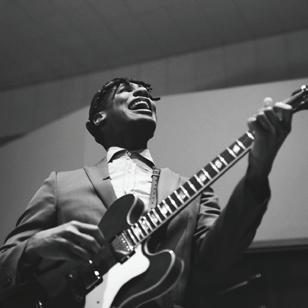
MAY 25 9 AM - 4 PM
RYMAN COMMUNITY DAY FREE SELF-GUIDED TOURS FOR TN RESIDENTS
MAY 29
LARKIN POE WITH KATIE PRUITT

OCTOBER 1 JON BATISTE ON SALE TUESDAY, MAY 20 AT 10 AM
OCTOBER 14



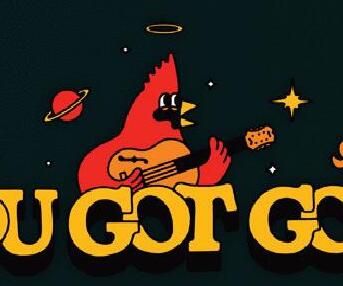







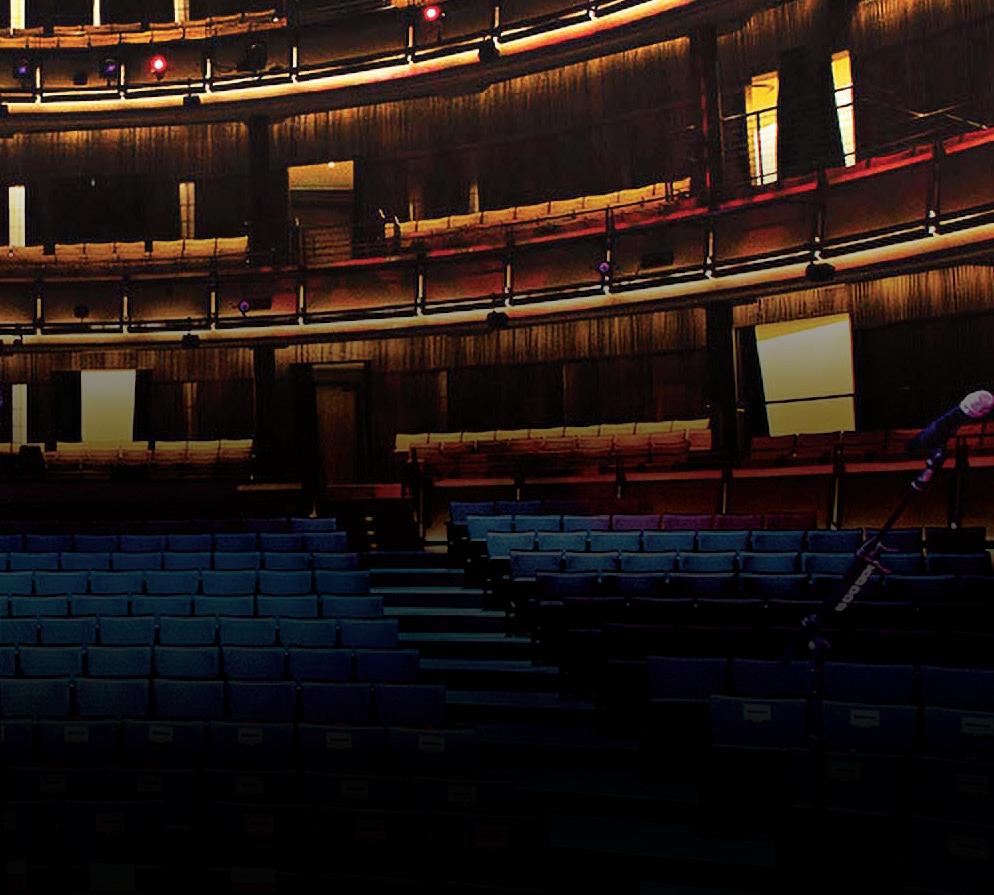
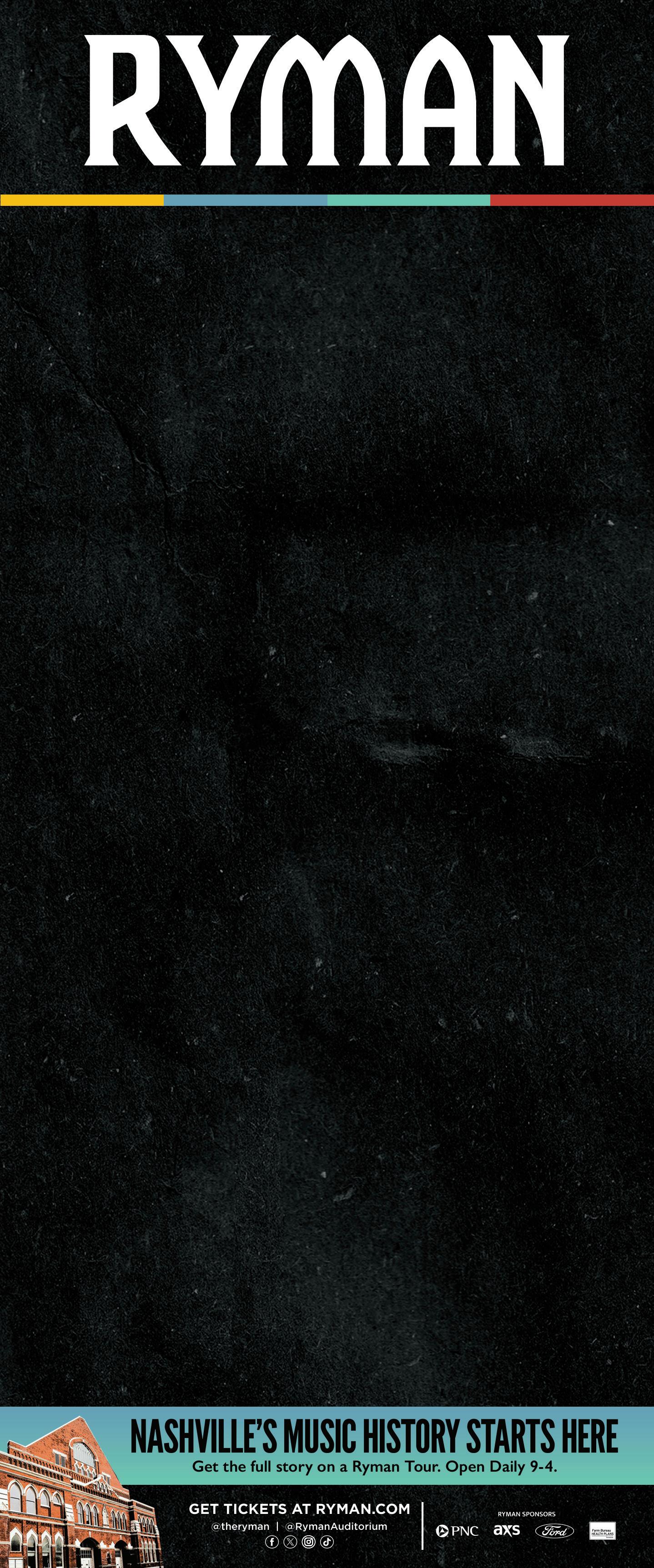




MJ LENDERMAN & THE WIND WITH DAVID NANCE & MOWED SOUND ON SALE FRIDAY AT 10 AM
OCTOBER 28
STRAIGHT NO CHASER ON SALE FRIDAY AT 10 AM
NOVEMBER 19
GABBY’S DOLLHOUSE ON SALE FRIDAY AT 10 AM
DECEMBER 27
MATT MATHEWS ON SALE FRIDAY AT 10 AM
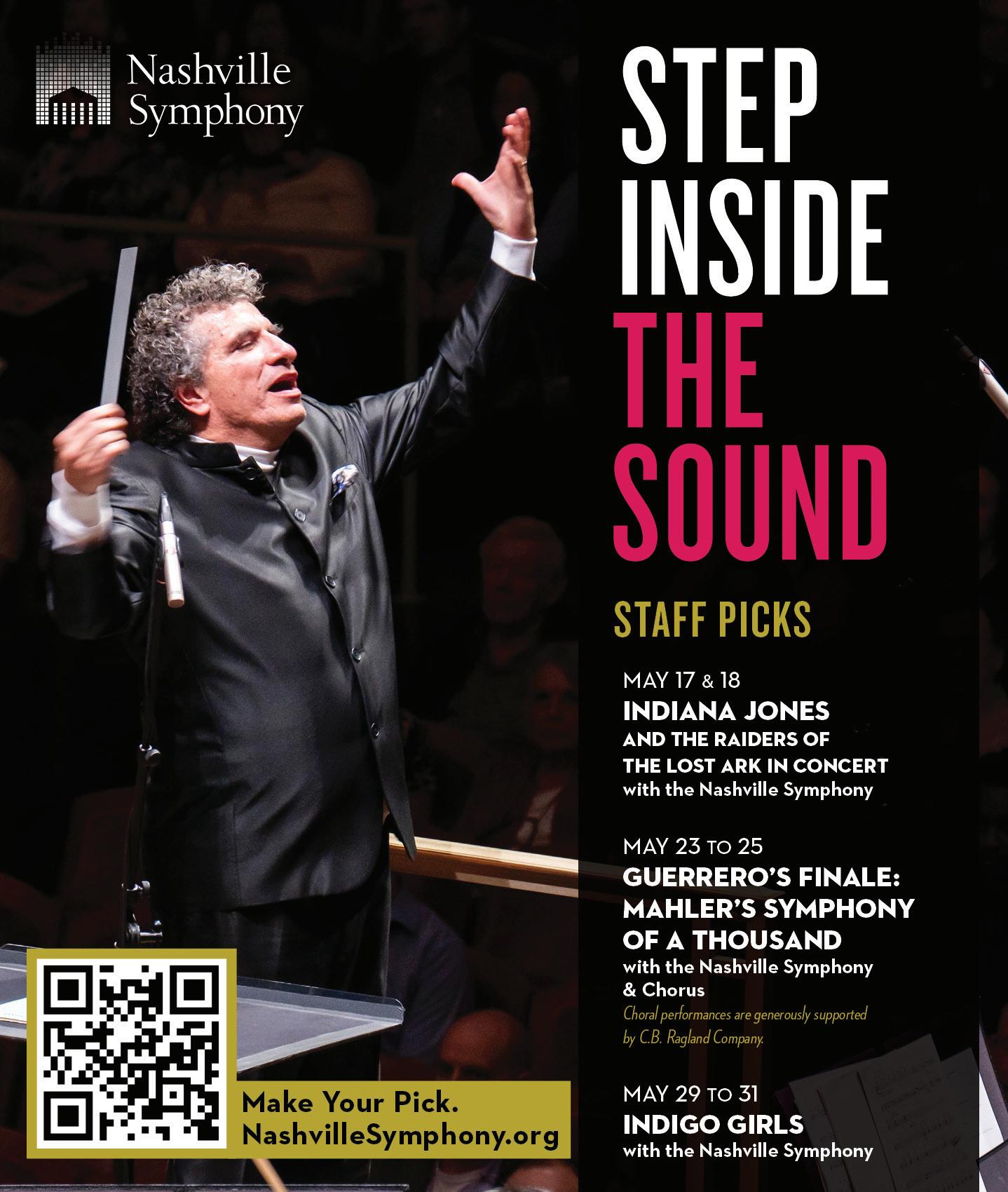



MAY 15-17
THEATER
[[IN THE LAB] BRAVE NEW WORKS LAB
Each year, OZ Arts invites some of the city’s most innovative artists to explore, create and present original performance works through its Brave New Works Lab. It’s a fabulous program from the local nonprofit — an important local institution that sadly recently discovered it will be losing grant funding from the National Endowment for the Arts. The lab frees up participants to focus on their art without the usual worries of administration, marketing and venue management. You can check out the nonprofit’s fourth annual Lab this weekend with four compelling new projects. With Ba Tsamaile, Tumelo Michael Moloi and Windship Boyd will explore the convergence of two distinctly visceral forms — South African gumboot dance and the Southern tradition of stepping. There’s also a large-scale multimedia production from spoken-word artist Landry Butler and underground music collective Inglewood Social Club titled Welcome to Paradise. The always inventive choreographer Stacie Flood-Popp and her Found Movement Group will be on hand with Bosch — a surreal dance-theater piece that takes its inspiration from a 500-year-old painting by Hieronymus Bosch. Plus, hip-hop artist Kourtney “Koko” French will take on potent “concepts of time and urgency” with On Time AMY STUMPFL
MAY 15-17 AT OZ ARTS
6172 COCKRILL BEND
THURSDAY
ART [DISTORTION TO STATIC] CHRIS CHANDLER: FREQUENCY & DISTORTION
Chris Chandler’s Frequency & Distortion brings a fine-art take to letterpress printing at Haley Gallery this year. Like the letterpress printermakers at Hatch Show Print — also housed at Haley’s headquarters at the Country Music Hall of Fame and Museum — Chandler deals in type. The artist uses modular woodcut fonts like Alpha-Blox and Futura Schmuck. Chandler combines his letters into phrases before he literally deconstructs the letters into their basic, modular elements: triangles, circles, etc. With the letters go the words and the phrases, steering the work into the liminal spaces between signal and noise that Chandler alludes to in his title. The artist’s experiments result in poetic, abstract works that remind viewers of the malleability of written language, while celebrating the formal beauty of graphic design and printing. JOE NOLAN
THROUGH JULY 11 AT HALEY GALLERY
224 REP. JOHN LEWIS WAY S.
[YOU’RE GONNA NEED A SMALLER BOAT] JY’ALLS
OK, so we don’t typically include elementary school theatrical productions among our Critics’ Picks, but you’ll soon understand why we’ve made an exception here. This week, Eakin Elementary School in the Hillsboro-West End neighborhood will stage JY’ALLS — “a musical based on a movie based on a book.” Almost exactly 50 years after the release of Steven Spielberg’s groundbreaking 1975 thriller JAWS, JY’ALLS promises a cast of “dozens of earnest and adorable students” — per writer and producer Edwin Willmore’s description — providing renditions of such maritime classics as “Under the Boardwalk” and “Rock Lobster,” among other songs. Willmore promises this production will be “stripped down to its bare bones,” but with all the essential tension that made Spielberg’s original an instant classic. And the titular shark? In this case, it’s a 16-foot-long puppet. (Fans of Rushmore: Are you picking up the Max Fischer vibes here?) There will be four stagings this week, and pay-what-you-want tickets are available at eakinpto.org/jyalls.
D. PATRICK RODGERS
MAY 15-17 AT EAKIN ELEMENTARY SCHOOL
2500 FAIRFAX AVE.



2ND & BROADWAY






31






From platinum-selling chart-toppers to underground icons, household names to undiscovered gems, Chief’s Neon Steeple is committed to bringing the very best national and regional talent back to Broadway. From pla

5.3 Y’ALL FM 90’s Request Line Live! w/ Shelby Lee Lowe
5.4 Livin’ the Write Life
5.7 Eric Paslay’s Songs in a Hat w/ Steve Moakler, Cyndi Thomson
5.8 Natalie Hemby: Truth About A Song

5.11 Pick Pick Pass w/ Kevin Mac, Ronnie Bowman, & Special Surprise Guest
5.13 Chief’s Outsiders Round w/ Skyelor Anderson & Ben Kadlecek w/ Drew Dixon, Michael Leatherman, Caleb Mills, Steve Thomas
5.31 Craig Campbell: Almost Greatest Hits May 8
5.15 Thomas Csorba, Kiely Connell, Stephanie Lambring
5.16 Aaron Nichols & The Travellers: Chris Stapleton Tribute
ROUNDS
5.17 End of the Line: Performing Songs from “Idlewild South” & “Live at the Ludlow Garage” 5.22 James House: “Stronger Than The Dark” Album Release Show
5.24 Doug Stone Farewell Tour
5.26 Buddy’s Place w/ Kayley Bishop, JP Burr, Striking Matches
5.28 Ethan Anderson, Michael James Arnold, Derek James, PJ Repetto
5.29 Andy Griggs
At Chief’s we understand that great music is born from the heart and soul of it’s creators, which is why our writers’ rounds are dedicated to celebrating the brilliant minds behind some of today’s most iconic songs.



throughout his career, and here they become embroidery, the beadlike pills arranged on black velvet as if by unseen gravitational forces. In the fall, when Russell and I spoke for the Scene’s issue on Nashville’s Indigenous community during Native American Heritage Month, he was especially excited about the installation for the show, which will feature photographs printed on satin and jersey billowing off the walls. The opening reception is Saturday, but keep a dreamy eye out for ongoing programming until June 28. CAT ACREE OPENING RECEPTION 5 P.M.; THROUGH JUNE 28 AT TINNEY CONTEMPORARY
237 REP. JOHN LEWIS WAY N.
“It’s a Nice Day to … Tour Again!” states Billy Idol, quoting his 1982 classic “White Wedding” as the name of his latest tour. Fans are sure to hear favorites like “Eyes Without a Face,” “Dancing With Myself” and “Rebel Yell ” at the tour’s Nashville stop, but Idol is far from complacent. He’s also supporting a new album, Dream Into It, which came out in late February. On it, the punk icon with ’80s New Wave clout has a song featuring Avril Lavigne and another featuring Saturday’s opening act, Joan Jett. Jett and the Blackhearts are one of those acts, not unlike Idol, who most of us will know through decades of radio play. To hear such a classic as “I Love Rock ’n’ Roll” live from the original artist is something special. I might check out the 2010 Kristen Stewart-starring The Runaways — about Jett’s all-girl rock band, the titular Runaways — to prepare. As someone who frequents concerts featuring ’80s artists, I can tell you that Idol’s look and energy stand out among the rest. At 69 years old, with his signature blond spikes, he shows few signs of slowing. HANNAH HERNER
7:30 P.M. AT BRIDGESTONE ARENA
501 BROADWAY
Drip Castles haven’t played a gig or released any of their recordings yet, but I’m eager to recommend their debut show just based on the snippets shared on social media. If you follow local music fairly closely, there’s a good chance all the faces in this supergroup will be familiar. Among other gigs and when she wasn’t working on her own records (including a new album coming at the end of May), Jess Nolan has toured in Jenny Lewis’ band, while multi-instrumentalist Will Honaker has been a trusted ally in the studio and onstage for folks like pop singer-songwriter Josie Dunne. Jillette Johnson released her third LP It’s a Beautiful Day and I Love You in 2021 and has followed it up with a slew of singles that draw from a bunch of threads of pop, and Parker Millsap released his sixth LP Wilderness Within You in 2023, which stretched his spiritual-but-not-religious spin on Americana in new directions. What they’ve come up with together sounds heavy on harmony and unison vocals and lively but not frenetic grooves. They’re set to play all of the music from their debut album with support from folk-electro-rock duo Texino and rocking country songsmith She Returns From War.
STEPHEN TRAGESER
7:30 P.M. AT SOFT JUNK 919 GALLATIN AVE. NO. 14
FILM [EDELWEISS]
The Sound of Music is one of those foundational movies that feels like a warm cup of tea to its fans. Not all of us have grown up recruiting friends to reenact “How Do You Solve a Problem Like Maria?” but even for the unfamiliar, it’s worth the two-hour-and-52-minute runtime to hear Julie Andrews’ showstopping voice and see the gorgeous scenery (which inspired what looks like a very fun bus tour in Austria). I loved the movie even before I knew it was based on a true story. There is a real Maria, whose memoir
the film is based on. (When you’re done, you have to watch the clip of Andrews and the real Maria von Trapp yodeling together.) Von Trapp descendants still travel the country to share music with the masses, and some of them make beer — von Trapp Brewing will be attending the Saturday screening. Part of the beauty of the 1965 film is that you can talk to people of all ages about it. And the older you get, as you revisit this movie, the more you’ll find Captain von Trapp is hot and sexy. Visit belcourt.org for showtimes.
HANNAH HERNER
MAY 17-18 AT THE BELCOURT 2102 BELCOURT AVE.

[A SHRUBBERY!]
1975 was full of milestones. It was the year that Monty Python and the Holy Grail came to theaters, the first episode of Wheel of Fortune aired and Pedro Pascal was born. But most relevant to our interests at the moment is that 1975 was also the year that The Nashville Bonsai Society held its first meeting. That’s right — there’s a longtime local fan base for the weird little trees that last forever and count Mötley Crüe’s Tommy Lee among their many devotees. The homegrown community of bonsai artists and professionals will be celebrating its golden anniversary this weekend at the Frist Art Museum. The event promises workshops, demonstrations, auctions and tree displays from featured artists in Tennessee, Georgia, Alabama and Mississippi. The courtyard will also host vendors for bonsai artists and enthusiasts. If you’re interested in bonsai, or if the idea of a bonsai society sounds fascinating in a Christopher Guest movie kind of way, you should be at the Frist for this weekend’s event. Sign up to join Nashville Bonsai Society while you’re at it — these guys, like the trees themselves, plan to be here for a long time. More information is available at bonsainashville.com. LAURA HUTSON HUNTER
10 A.M.-5:30 P.M. AT THE FRIST
919 BROADWAY
BOOKS [UNDER THE COVERS] TEMPTED BY FICTION: A BOOK LOVERS FESTIVAL
Romance lovers, rejoice — Tempted by Fiction: A Book Lovers Festival will have all of your favorites in one spot. Hosted by Nashville Smut Lovers, the festival will bring together authors, fellow book lovers and bookish merch in one place. There will be author signings throughout the day, including Ashley Reyes, Katie Knight, Deanna Dellia, Crystal J. Johnson, Felicity Vaughn and Tay Rose. If you need some advice on which book to grab next, Andrea Brink will be there with a recommendation (or three). Two of Nashville’s latest book trucks, Shadowed Pages Mobile Bookshop and Sugar and Spice Book Co., will have romance books of all kinds available to purchase. Nashville Public Library will also be in attendance, if you’d prefer to borrow your next title. Other vendors include Clay and Clover Earring Co., Literary Flour and Starlight Candle Company with themed gifts of your preferred fandom. Apart from books, grab a tarot reading from Hummingbird Heart or a spicy earring set from Ketzel Pretzel Piercings. The event is free and kicks off at noon. Make sure to grab a beer, a book and enjoy! TINA DOMINGUEZ NOON AT FAIT LA FORCE BREWING
1414 THIRD AVE. S., SUITE 101
The concept of a “hall pass” — an agreement allowing a partner to sleep with one specific person without repercussions — has left a noticeable mark on pop culture. It pops up in an episode of Friends (where Ross’ surprisingly cool picks included Winona Ryder and Isabella Rossellini) and even inspired an entire comedy film of the same name. Think of it as the celebrity crush fantasy, but with an actual green light. Artist Jamie Bradley has taken this idea a step further, curating an art show centered on the theme of hall passes, and she’s invited her friends to contribute. The results are odes








june




May
june

june








MARGARITA
Barrel Proof | Calle Taco | COA Rooftop
Condado Tacos | Dos Santos | Eddie Ate Dynamite
Fonda | Garage Sale Vintage | Golden Sound | Harth












































Ticket prices increase Friday, May












































Holston House | Hoppin’ North | Las Palmas | Lona
Makeshift Mesero | Pancho & Lefty’s | Ruby Sunshine
Saint Añejo | Social Cantina | Soho House
STK Steakhouse | Taco Bamba | Tee Line | Torchy’s Tacos
FOOD TRUCK FARE PROVIDED BY
Saint Añejo | Taco Bamba | Las Palmas
Haute Wheels Rolling Sandwich Co
Pie Town Tacos | Rollin Thai


















CAFE COCO SAT at the top of an incline off Elliston Place, rising from the strip known as the Rock Block, its iconic red-and-yellow sign often illuminated against the night sky. And when everything was still as it was meant to be, before Exit/In had to fight for its life and beloved bar the Gold Rush shuttered after 45 years, Cafe Coco — Nashville’s former 24-hour cafe and citadel — was still up and running, filling the rooms of 210 Louise Ave. with its magic.
Many Nashville residents who were around during the fabled cafe’s heyday often use the word “magic” as a descriptor. When I talk to my fellow longtime Nashvillians about it, their hearts open and they tell me how much Cafe Coco means to them. When they describe their experiences there, they often use candid and introspective phrases — phrases like, “Cafe Coco made us feel like Nashville was the city that we lived in, not the city that everyone came here for.”
The building itself, a two-story house in Midtown, was built in 1920. Chuck Cinelli, the founder and primary owner of Cafe Coco for the majority of its 28-year run (he still owns Coco’s Italian Market in West Nashville), knows this because strangers would often tell him of the building’s history. At one point, it was a boarding house, and a man who once rented an upstairs bedroom told him how he and the other tenants would hang out on the roof. The building’s extensive lore predates Cafe Coco’s 1995 opening by 75 years.
“When I got it, someone used it for storage for a frame shop, which I think was across the street,” Cinelli tells the Scene
Cinelli is warm and inviting, and many of his memories of running Cafe Coco are incredibly vivid. The cafe was open 24 hours — an increasingly rare practice. Even East Side spot The Cobra closes down at 3 a.m. every night.
Speaking to Cinelli, I can’t help but gush about how much love my friends and I have for Coco. I tell him about my first experience there, how after moving to Nashville as a teenager, I wound up making friends with a handful of rebellious prep-school lesbians who took me to Cafe Coco one night. We smoked cigarettes in the back room with an elderly drag queen and two gutter punks with crusty, towering mohawks held together with Elmer’s Glue.
Cinelli, a family man from the Northeast, lights up when I tell him these stories. “I knew it was magical,” he says. “I knew it was important. But at the same time, it was just nothing but hard work.”
Cinelli moved to Nashville in his 20s with nothing to lose — Nashville was the midpoint between his hometown of Schenectady, N.Y., and Florida, where his parents had recently
Remembering the Rock Block’s all-night place of belonging, gone but not forgotten BY
CAMERON BEYRENT
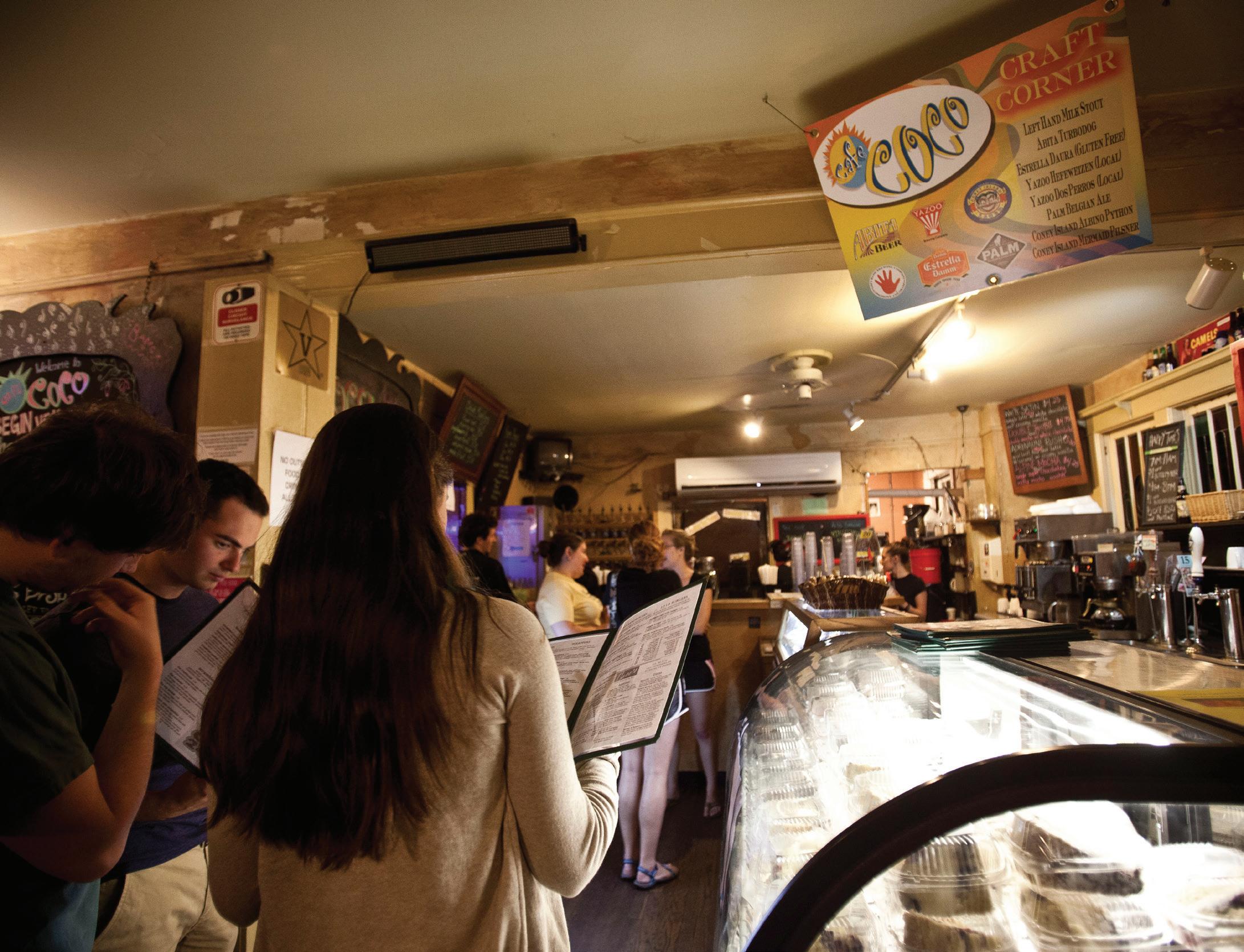
retired to. He comes from a long line of hardworking restaurateurs, so opening a place of his own seemed inevitable. He originally opened the cafe under the name Cafe Elliston, but he quickly changed that to Coco (for his grandmother, whose maiden name was Di Cocco) when people confused it with Elliston Place Soda Shop, another Rock Block staple. Chuck initially slept in the basement and rented out his house in East Nashville to make ends meet, but thanks in part to his family history and love for authentic Italian coffee, the cafe was soon a hit, transitioning from late-night hours to 24 hours in less than a year.
It’s hard to pinpoint exactly when Cafe Coco started to get a little weird — the type of old-school-Nashville weird that the cafe eventually epitomized. Maybe it was when eccentric people began showing up on the patio with snakes wrapped around their hands and squirrels in their pockets. Or perhaps it was when patrons actually started sleeping there. (I remind Cinelli of this, how he used to let unhoused youth essentially live at his cafe.
He smiles and humbly tells me that sometimes those kids, now adults who found their way, approach him in Kroger and thank him with tears in their eyes.) Or maybe it was the legendary open-mic nights in the back room, the hip-hop shows and poetry slams, or just the way Cafe Coco took on a life of its own. The food was also incredible. (“Nobody could make that turkey Rockefeller at home,” says Cinelli.) Nothing about it felt inauthentic; there were no chrome parts. The lights were never off — the cafe often remained open even on Christmas — and the music never stopped.
I don’t think it ever occurred to us that Cafe Coco would one day turn off its lights for good. Cinelli eventually sold the cafe in 2020, and subsequent owners attempted to keep it alive. But perhaps due to menu changes and fluctuating hours, it never really recovered. In November 2023, Cafe Coco was permanently closed. The building is now set to house a combination all-day cafe and cocktail bar (Verna) and neighborhood bar (Connie’s Upscale Dive), owned and operated by established food-
and-beverage pro Beau Gaultier. Gaultier hopes to open early this summer.
Cinelli attributes the death of Cafe Coco to the internet. He reminds me of how loud it used to be — like a “school cafeteria” — describing how patrons would sit for hours and “geek out on coffee,” not knowing they weren’t supposed to have four shots of espresso at once. It makes me recall how the energy of the cafe was so vibrant that it practically roared.
“And then the internet showed up, and it got quiet.”
A friend once described to Cinelli how Cafe Coco functioned as the internet before there was such a thing. “She said, ‘Chuck, [Cafe Coco] was the internet. That was a server, [because] that’s where people connected.’ It was such a beautiful connotation.”
It is a beautiful connotation because it was through those connections that we learned to be ourselves. “It was for everybody,” Cinelli says. The magic of Cafe Coco was simple: It made Nashville feel like home. ▼



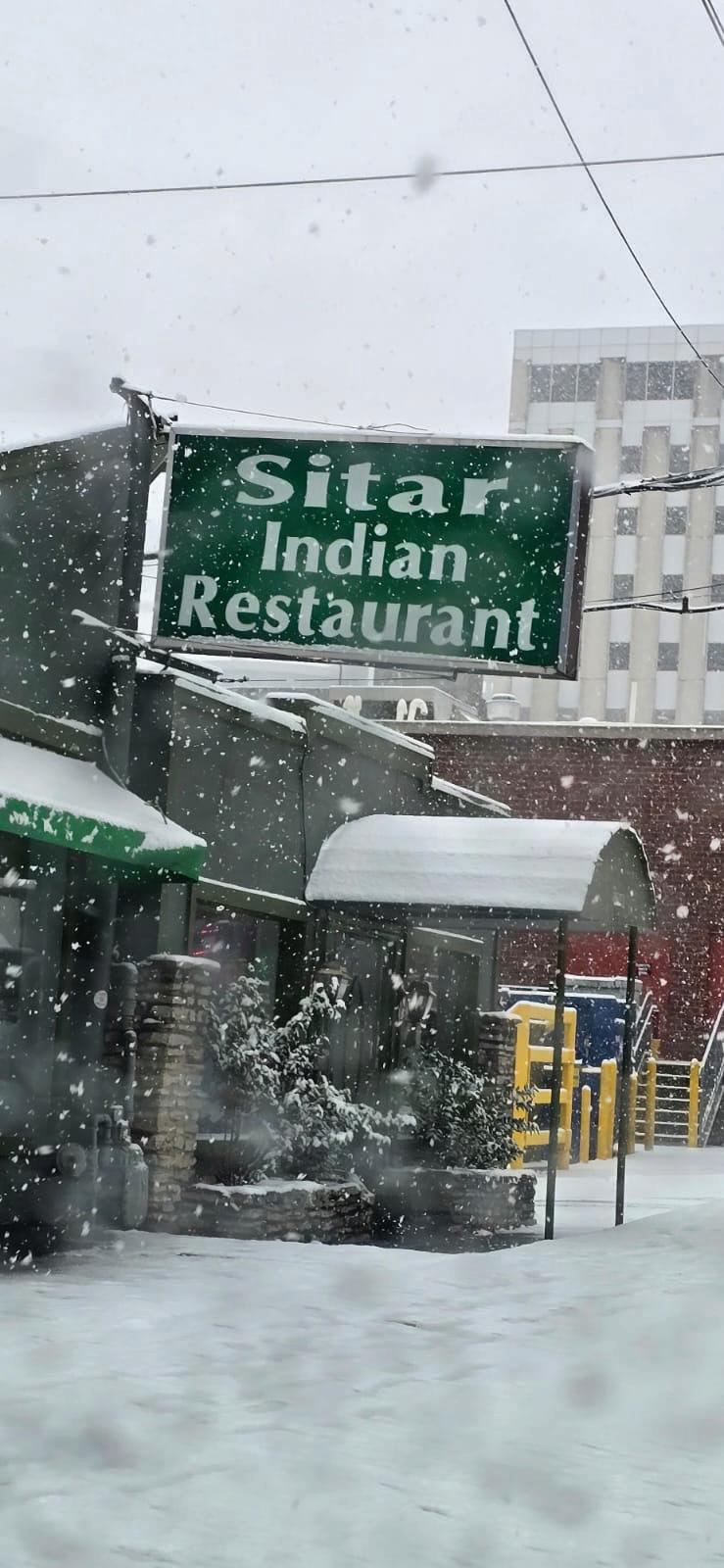










Name : CISSNEI
Age: 5 mos.
Weight: 15 lbs
CISSNEI may be just a puppy, but she’s already mastered the art of stealing hearts! Super affectionate and full of wiggles, this lovebug adores climbing into laps, snuggling close, and soaking up all the belly rubs she can get. She’s got a big personality packed into a small, wiggly body—and did we mention she’s a fan of spray cheese? Cissnei craves human affection and thrives on connection, making her the perfect companion. She’s still young and curious, ready to grow up with a family that adores her as much as she’ll adore them.


Call 615.352.1010 or visit nashvillehumane.org
Located at 213 Oceola Ave., Nashville, TN 37209 Adopt. Bark. Meow. Microchip. Neuter. Spay.
An unexpected friendship lies at the heart of Ocean Vuong’s The Emperor of Gladness
BY EMILY CHOATE

IN THE OPENING




CHAPTER of Ocean Vuong’s new novel, The Emperor of Gladness, we are led deep into the mysterious landscapes of East Gladness, Conn. Here, Vuong intimates, layers of decaying human industry and lush vegetation reclaiming the land have fused in some complicated, indelible way.
“Yes, it is beautiful here, which is why the ghosts never leave.”
debut novel, On Earth We’re Briefly Gorgeous, became a beloved bestseller.


an independent bookstore for independent people
UPCOMING EVENTS
PARNASSUSBOOKS.NET/EVENTFOR TICKETS & UPDATES
6:30PM JAMES PATTERSON

10:30AM
FRIDAY, MAY 16
with ANN PATCHETT at MONTGOMERY BELL ACADEMY The #1 Dad Book: Be the Best Dad You Can Be in 1 Hour
SATURDAY, MAY 17
SATURDAY STORYTIME with ALLIE MILLINGTON at PARNASSUS When You Find a Hope
5:30PM OCEAN VUONG
6:30PM DAVE BARRY
SUNDAY, MAY 18
with ANN PATCHETT at NASHVILLE PUBLIC LIBRARY The Emperor of Gladness.
MONDAY, MAY 19
with ANDY BRENNAN at NASHVILLE PUBLIC LIBRARY Class Clown
6:30PM CHASTEN BUTTIGIEG at NASHVILLE PUBLIC LIBRARY Papa's Coming Home
6:30PM NICOLE JARVIS

WEDNESDAY, MAY 21
with RACHEL RANDOLPH at PARNASSUS A Spell for Change
THURSDAY, MAY 22
3900 Hillsboro Pike Suite 14 | Nashville, TN 37215 (615) 953-2243 Shop online at parnassusbooks.net

@parnassusbooks @parnassusbooks1 @parnassusbooks @parnassusbooksnashville


Set among towns “so small you could light a cigarette as you drive in and be someplace else before you blow your first drag out the window,” East Gladness evokes the recognizable atmosphere of innumerable American podunks while also vibrating with its own particular detail and lore. In this potent setting we meet Hai, a 19-year-old with a tenuous foothold on life. Hai stands on the edge of a bridge, about to jump, when a stranger’s voice calls out to him. This intervening stranger is Grazina, an 82-year-old woman who once fled Stalinist Lithuania and now lives in a fading rail house by the river.
The Emperor of Gladness By Ocean Vuong Penguin Press 416 pages, $30
Vuong will discuss The Emperor of Gladness at a ticketed event co-hosted by Parnassus Books
5:30 p.m. Sunday, May 18, at the Nashville Public Library
The Emperor of Gladness marks a point of ambitious expansion in Vuong’s body of work. Its scope encompasses the threat of Stalin-era Lithuanian gulags, the fallout of immigrating to America from Vietnam, the heavy toll of addiction on small New England towns, and the myriad smaller choices (good and bad) that people make as they try to keep their lives going — especially when dramatic leaps toward healing or success are not realistically attainable.
“I wondered if I could write a book that didn’t have any improvement arcs,” Vuong said in an emotionally potent New York Times interview earlier this month. He describes working dead-end jobs and caring for loved ones at the end of their lives (including a real-life Grazina, with whom Vuong lived for two years) as circumstances that foster particular kinds of bonds defined by “kindness without hope.”
The Emperor of Gladness revolves around the unexpected intergenerational bond that develops between Hai and Grazina. Facing the early stages of dementia, Grazina offers Hai a place to live in exchange for helping her out.
Haunted by addiction and semi-estranged from his mother, Hai takes up this new chance to remake his life, getting work at a local fastfood place. There the sub-world he finds among his co-workers gives him a new sense of connection during a time when the atmosphere of their community strains from pervasive addiction and economic decline.
Vuong occupies a unique space in American letters. He is the author of two well-received poetry collections that give an emotionally candid voice to queer and immigrant experiences: Night Sky With Exit Wounds (2016) and Time Is a Mother (2022). Still in his mid-30s, Vuong has won a MacArthur “Genius” Grant and an American Book Award, and in 2019, his slender, lyrical
In other words, there are times when we’re in it together, just needing to get through our days as we are, and in doing so, we recognize our shared humanity. The heart of this novel lies in the dynamic between Hai and Grazina, bonded by their fraught immigrant experiences but also by the fragility of their current lives. Soon after they meet at the bridge, Hai observes this odd figure who has saved him in a way he never could have predicted: “He watched her as she prayed, this bent stub of a woman, hair matted at her temples, whose voice had earlier coaxed him back to solid ground.”
At its best, The Emperor of Gladness resonates with the quiet, highly attentive energy of lush, secretive spaces. Marginal voices of numerous kinds seem to occupy its peripheries, offering us stories that could come only from the outskirts.
For more local book coverage, please visit Chapter16.org, an online publication of Humanities Tennessee. ▼
Photographer Arielle Gray is creating intimate, innovative photography in Nashville
BY LAURA HUTSON HUNTER
IN THE MIDDLE of a Zoom call with the Scene, Arielle Gray’s twin sister steps into the camera’s frame and kisses her on the cheek, then walks away. It’s a quick moment, but an effective one — the 28-year-old photographer immediately drops her shoulders and pushes a braid behind her ear, visibly relaxing a bit.
“I see her as a soulmate,” Gray says of her sister, Iyana. “I see her as a mirror at times, but most of all I just see her as somebody that I draw inspiration from.”
Gray’s close bond with her twin has been both a grounding presence and a formative dynamic — someone to identify with, and also to define herself against. A graduate of Yale’s MFA program, Gray brings an intimate and rigorous eye to questions of identity, kinship and self-representation.
Gray relocated to Nashville to be with Iyana, who originally moved to the city to attend Vanderbilt and now works as a nurse practitioner. It’s a far cry from where they grew up, in an Alabama town of about 3,000 people called Moundville. “It was a bit of a Southern Gothic kind of upbringing. We grew up kind of isolated from other children, and we had a lot of playtime to ourselves with our mom, who was also a single mom.”
Her mom had a job at Lowe’s, and the three of them lived in a trailer next to Gray’s grandmother’s house. In many ways it was an ideal childhood, and some of her earliest memories include photography.
“Our mom used to take photographs of us on the hill in Moundville,” she says. “She would dress us up in, like, jean jackets and blow our hair out into afros, and she would just make us model for her. And that was sort of a part of our playtime, too.”
When she started studying photography at the University of Alabama, she found that she responded to it right away. She learned about foundational practitioners — Gordon Parks, Dorothea Lange, Sally Mann and Carrie Mae Weems. “It felt like a whole well of new knowledge, and something that kind of just stuck to me.”
Gray’s photograph “Krazy Glue” shows her range and knack for capturing complexity: a self-portrait that is also an image of a photograph of her and her twin, encased in a ceramic picture frame adorned with teddy bears that had just been repaired with Krazy Glue — an adhesive favored by her grandmother, whose own portrait is embedded in the piece. The whole thing is a tactile assemblage of women — a mirror image, a twin, an ancestor — held together in a fragile but intentional constellation.


The twin relationship recurs throughout photography, from Diane Arbus’ iconic 1967 photograph of identical twins in matching dresses to Deana Lawson, an acclaimed contemporary photographer who is herself a twin. In an essay in Lawson’s 2022 monograph, Eva Respini discusses the twin relationship directly. “The themes of duplication and identity might be seen as parallels to the artist’s own relationship to her sibling,” she writes. The same could be said of Gray, whose close bond with her twin has been both a source of strength and a constant mirror.
Gray is in the process of creating a new body of work, which will be exhibited as part

of a group show at Zeitgeist this summer. The Wedgewood-Houston gallery has long played an important role in the community by championing Nashville-based artists whose work might not fit in a more traditional commercial gallery. The summer show, curated by Alisa Jernigan and Evan Roosevelt Brown, will address themes of gathering.
“I think that gathering — especially in regards to Black people gathering in spaces with and for ourselves — is going to be a really good highlight for the show,” she says. “I’ve still got a lot of work to do for it, but it’s a good challenge, because I feel like, down in the South, that is something
that kind of grows like wildflowers down here. So I think it’s there. I just have to go get it.”
She’s making all new work for the show, and is still looking to connect with people to be in her photographs — specifically people who identify as Black and are 19 and older. Her preference is for interested people to contact her through email.
“I don’t want to limit the age range of who I photograph,” she says. “I want to bring people together, and I want to see what that looks like for me. I feel like there’s beauty in everybody, and I just want to photograph it.” ▼






SCALES










BACKSTAGE

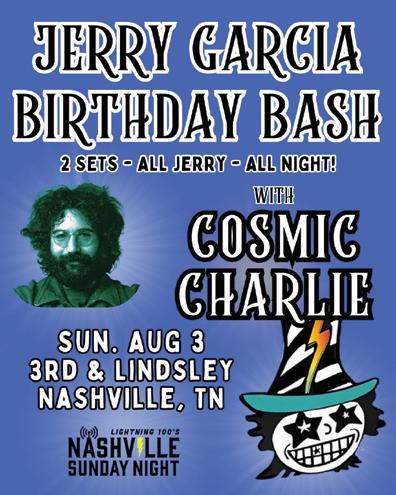


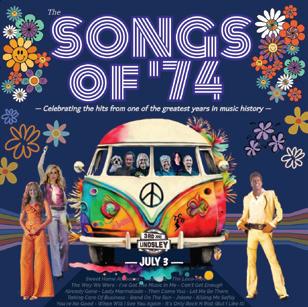

































































































Yola reawakens herself with My
BY BRITTNEY M c KENNA

YOLA IS IN HER joyful-rage era.
The U.K.-born, New York-based former Nashvillian says so during a late-March afternoon chat on Zoom amid preparations to hit the road on her Sovereign Soul Tour, which stops at The Basement East on Thursday. Yola launched the tour partially in support of her latest project, the My Way EP. Released in January, it’s her first release since the six-time Grammy nominee’s critically acclaimed second album Stand for Myself dropped in 2021.
My Way represents the latest incarnation of Yola’s expansive sound, drawing upon her love for funk, soul, R&B and pop to dynamic and often surprising results. Thematically, the five-pack of new tunes grapples primarily with agency, whether in romantic situations — many of these songs reference a period of Yola’s life when she was dating regularly — or in the act of expression itself. The result is her boldest, most self-realized work yet, as she advocates for her lived experiences through music that dares you not to dance along with her.
While each Yola project sounds different from its predecessor, that defiant spirit connects them to one another, something she says her fans often understand better than the music industry has. Yola shares that, while she was readying My Way, some industry folks around her were skeptical that fans would embrace this different sound. It draws more from influences that were a big part of her early work with dance produc-
ers — like Off the Wall-era Michael Jackson and ’80s Tina Turner — and less from the old-school blues, folk and soul that inform her two previous Dan Auerbach-produced LPs, Stand for Myself and 2019’s Walk Through Fire
“My fans were like, ‘Girl, we knew this was coming for years,’” Yola says, laughing. “They’re like, ‘We’re not surprised. Now release the baby.’
I’m like, ‘Sorry, I’ve got a little bit of a Broadway thing going on.’ And they’re like, ‘Cute, actually. OK, that must be fun. None of us would turn down a lead on Broadway, so go and take that.
But we know what’s coming.’”
That “Broadway thing” was, of course, Yola’s turn as Persephone in the critically acclaimed Broadway production of Hadestown, which she performed for several months last year. Though certainly a bucket-list experience, it didn’t take Yola’s eye off another prize: bringing the sounds that would populate My Way out of her head, into the studio and onto a record.
To help realize that vision, Yola assembled what she describes as “starter teams,” who helped her create “pre-demos” to take to recording sessions. These early collaborators include drummer Howard Artis, artist and multi-instrumentalist Haasan Barclay and Memphis-based production duo The PRVLG. The resulting tracks gave Yola something to take to Sean Douglas and Zach Skelton, who co-produced My Way with her.
“They would help me get the beginning of
Playing 8 p.m.
Thursday, May 15, at The Basement East
these gazillion voice notes, or these things I can hear, into this kind of primordial shape where I can go, ‘Here’s my idea,’” she says. “That’s what I like to try and populate my hard drive with — like, an inexhaustible number of pre-demos.”
She cites the collaborative nature of making My Way as integral to realizing its full potential. This most recent experience stood in stark contrast to some past studio sessions, during which she had little control over how a finished song sounded.
“I call that ‘rapacious collaboration,’ for the people that don’t understand what consent is,” she says. “When I talk about what is ‘my way,’ my way is true collaboration. It’s about really being truly open, and finding other people who are really, truly open.”
My Way is Yola’s first release with S-Curve Records, and being with a new label also gave her the freedom to make the record she wanted to make. She jokes that while making this EP, she didn’t have to worry about the “sausage-making situation” of past projects, laughing as she says, “I didn’t even have to be a sausage this time. I could be a beef Wellington.”
In turn, more creative freedom gave Yola the opportunity to dig into some difficult subjects, like she does in closing track “Ready.” It has roots in her mother’s experience as part of the Windrush generation. Born in Barbados, Yola’s mother was part of a wave of Caribbean people lured to the U.K. in the wake of World War II
with promises of prosperity, only to arrive and find little waiting for them. Yola’s mother never received what was owed to her, even at the end of her career.
“They said that her work records were lost in a fire — an imaginary fire, that it turns out didn’t happen,” Yola says. “They lost her records — and just coincidentally, all the other Black people’s records. She worked for 30 years, and they couldn’t find the record, so she didn’t qualify for her superannuation pension. She died before she ever got it.”
Yola could have made “Ready” a dark, vengeful song. Instead, the tune sounds like a spiritual cousin to the Thriller standout “Wanna Be Startin’ Somethin’.” It also has a deep connection to Afrobeat, a spiritual touchpoint for Yola.
“When I hear reggae, dancehall — my butt will do the same thing any other Caribbean will do,” she says. “When I hear Afrobeat, I am still utterly entranced and obsessed. I don’t know what the hell we did before Afrobeat, but I don’t want to remember. I’m not interested in remembering what happened before that.”
Firmly connected to her roots, Yola says the joy in her music has permeated her offstage life. Finding her way through the past few difficult years has brought her to a place of peace and happiness. It’s powerful enough that it’s reawakened her body — and her voice.
“All my whistle tones are coming back, because I’m happy. I’m finally just blossoming.”





KEN POMEROY W/ DRUMMING BIRD FRI, 5/16
THE BONES OF J.R. JONES W/ HENRY OF RUEN BROTHERS SAT, 5/17
SAM RYDER MON, 5/19
ZACH JOHN KING SOLD OUT THU, 5/22
FACE VALUE: A TRIBUTE TO PHIL COLLINS SEATED THU, 5/22
BROADWAY RAVE FRI, 5/23
BABYJAKE SAT, 5/24
KITTY’S RAVE SAT, 5/24
PEELANDER-Z TUE, 5/27
DEEP BLUE SOMETHING THU, 5/29
THE BULWARK PODCAST LOW TICKETS THU, 5/29
AFROBEATS & FRIENDS FRI, 5/30
KOBUTA + FRIENDS WED, 6/4 & THU, 6/5
MAGGIE BAUGH THU, 6/5
KIDS THAT FLY FRI, 6/6















BY ELI MOTYCKA

























HEAD INTO FRIENDSHIP, the cringe comedy from writer-director Andrew DeYoung (Pen15) and leading man Tim Robinson (I Think You Should Leave), with fair warning. Robinson made his name in the spotlight of extremely awkward group situations made worse by compulsive missteps from his interchangeable central characters. These sketch circuses quickly fly off the rails of reality, narrowly careening between uncomfortable and hilarious. Robinson has made a career on the stuff, and over the past decade, taken the entire humor subgenre into new territory along with cringe luminaries like Zach Galifianakis, Kyle Mooney and Nathan Fielder.
For some, it’s an unwatchable kind of discomfort; for others, it’s sidesplitting absurdity. With Friendship, for 100 minutes, Robinson and DeYoung stretch the same formula to a nearly fatal dose.
exact challenge — with Tami and their son, with his co-workers and neighbors — triumphs as the story’s most cutting statement on the shared masculine tendency toward self-destructive emotional immaturity.
The rest of the movie chronicles Craig’s extended psychosocial tailspin. Desperate for a redo, Craig catches a becloaked Austin headed to a medieval faire, prompting a curt breakup. A devastated Craig uses his family to re-create the best memories of his friendship with Austin, only deepening his willful estrangement from an ailing wife and earnest son. The spiral brings many, many laughs as Robinson gets the rare chance to fully flesh out a character within his proven comedic groove. Craig’s brief experiment with a hallucinogenic toad in the back of a cellphone store stands out as a masterful collision of plot and humor.

Friendship quickly positions suburban business drone Craig Waterman toward a burgeoning friendship with new neighbor Austin Carmichael (Paul Rudd) and away from his failing, sexless marriage with wife Tami (Kate Mara), newly in remission from cancer. Waterman’s obsession with male approval draws him to Carmichael’s cool mustachioed confidence and supportive friend group.



While Tami rekindles a relationship with her firefighter ex-boyfriend, Craig and Austin go on spontaneous adventures and bond over symbols of masculinity, finally earning Craig an invite to a beer-fueled hangout. Surrounded by the coolest guys he knows, Craig is momentarily unable to control a sudden stroke of embarrassment and commits a violent party foul, immediately killing the vibe.
Craig recognizes he’s done something wrong but doesn’t know how to make amends. His failure to overcome different iterations of this
Friendship’s one surprise — Austin’s deepest secret, accidentally shared with Craig — comes with a brief flash of male vulnerability that is ultimately bungled at the film’s climax. Smart writing and perfect casting set up a sophisticated satire of male loneliness. Instead, the movie ends as a painfully absurd portrait driven by Robinson’s funny but limiting ability to keep moving along one axis while ignoring human consequences. Without any emotional payoff, Friendship succumbs to the familiar male tendency to make fun of everything. ▼
Friendship R, 101 minutes
Opening Thursday, May 15, at the Belcourt
1 Bub
4 Rapper with back-to-back tripleplatinum albums in 2000 and 2001
10 Meas. that becomes a third of its size if its second letter is removed
14 Hundredths of a Swedish krona
15 It might drip onto an urban sidewalk, informally
16 What a spooked horse might do
17 “To ___ is human, but it feels divine”: Mae West
18 Shoveling?
20 Show-stopping device
22 Godmother in Guatemala, perhaps
23 Space for venting?
24 Martini?
28 Ancient speakers of Nahuatl
29 Tie score ender
30 Steamed
31 Country known as the “Land of a Million Elephants”
32 Ear piece
34 Farm mother
35 Bandito?
39 Letters aptly missing from “d_ _a_ state”
42 Like many an atrium
43 Button often pressed moments before noticing a typo
46 Mound stat
47 Limo passenger, perhaps
48 Following
49 Sublet?
53 Reversal
54 Fair-hiring inits. since 1964
55 Some victories, for short
57 Rockette?
61 Parisian boulevard
62 Ursula’s lackeys in “The Little Mermaid”
63 Cry of joy
64 “What’s the ___?”
65 Jet stream direction
66 “My bad!”
67 ___ E. King, “Stand by Me” singer

DOWN
1 ___ Hennessy Louis Vuitton, French luxury goods holding company
2 What a car service might await
3 Corona o Dos Equis
4 Jacksonville N.F.L. player, familiarly
5 Vinegary
6 Testy chance encounter
7 Remove some metadata from, on social media
8 Diminutive, diminutively
9 Bastille Day season
10 Gospel
11 It might be pushed back by “just one more story”
12 Michigan city in Simon & Garfunkel’s “America”
13 Opposite of follow
19 It dissolves in H2O
21 Good way to come out
25 Member of the South Asian diaspora
26 Tabloid talk show host Povich
27 International grocery chain founded in Germany
32 Moves in a left-left-rightright footstep pattern
33 Norse god of war
36 Brand that rhymes with what it helps remove
37 Internet equivalent of an R rating
38 “Understand?”
39 Asylum seeker
40 Country whose name comes from the Latin phrase for “Red Sea”
41 Cars with clutches
44 Act of pleasant stress relief
45 Titular solver of many a medical mystery in 2000s TV
47 ___ diagram
48 Hebrew for “My Lord”
50 Grain milled into flour
51 Fabled storyteller
52 Gets “warmer”
56 In view
58 “Well, well, well!”
59 Rock’s ___ Fighters
60 New do hue?

